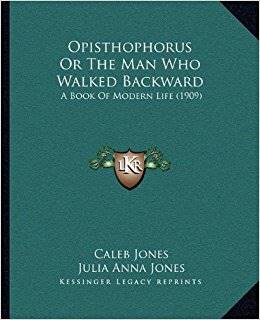 The affluent alcoholic has always had institutions that catered to his or her needs for periodic detoxification and physical and emotional renewal. When inebriate homes, inebriate asylums and addiction cure institutes collapsed in the opening decades of the 20th century, a new social institution quietly emerged on the American landscape. This new institution was the small, local "drying out" facility that offered discrete care for the affluent alcoholic. These sanatoria and rest homes became known as "dip shops" (a derivative of dipsomania--a medical term for the binge drinking pattern of alcoholism), "jitter-joints," "Jag-farms," or "jag-houses." Operating invisibly throughout the United States during the first half of the 20th century, their presence is revealed primarily via brief references in the autobiographies of American alcoholics. One published work, however, provides a clearer window into the inner operations of the early 20th century jag-house.
The affluent alcoholic has always had institutions that catered to his or her needs for periodic detoxification and physical and emotional renewal. When inebriate homes, inebriate asylums and addiction cure institutes collapsed in the opening decades of the 20th century, a new social institution quietly emerged on the American landscape. This new institution was the small, local "drying out" facility that offered discrete care for the affluent alcoholic. These sanatoria and rest homes became known as "dip shops" (a derivative of dipsomania--a medical term for the binge drinking pattern of alcoholism), "jitter-joints," "Jag-farms," or "jag-houses." Operating invisibly throughout the United States during the first half of the 20th century, their presence is revealed primarily via brief references in the autobiographies of American alcoholics. One published work, however, provides a clearer window into the inner operations of the early 20th century jag-house.
In 1909, a most unusual book was published. Authored by C. and J. A. Jones, the book was entitled, Opisthophorus: Or, The Man Who Walked Backwards. The purpose of the book was to better understand the sufferings and temptations of a "drunkard" as well as thepossibilities of "his" redemption. It pursued this goal by describing the experiences of Men of fine capabilities who, when sober, are often the most "refined of gentlemen" during their stay in a jag-house. Jones' book provides a unique portrayal of the workings of one such institution.
Two physicians are at the center of Jones' tale: a Dr. Coin who is personally transported by a friendly judge to Ohio where the doctor is to be treated for his alcoholism by a Dr. Car. The jag-house to which Dr. Coin is taken is a large home encircled with shade trees within which a handful of men are in varying stages of recovery from alcoholism. The house itself consists of private bedrooms on the second floor with a clubhouse, library and kitchen on the first floor. The home is administered by a middle-age couple and an old-maid who served as a cook and who believed that most of the patients were "drunken fools and not worth the powder and shot it would take to kill them." The medical and psychological care of the residents was provided by Dr. Car, who made twice-daily visits to all the patients. The care consisted of tapered withdrawal via decreasing doses of whiskey, hypodermic injections of undisclosed but sedating content, regular ingestion of medicinal tonics, nourishing food, sober fellowship, and the motivational talks of Dr. Car.
The social attitudes toward alcoholism at the time are revealed in a letter Dr. Coin receives from his father-in-law. The letter castigates Dr. Coin for putting his faith in a quack doctor, admonishes him to be a man and control his drinking, and warns him to not attempt reconciliation with his wife.
Following many weeks of treatment, Dr. Coin and his fellow patients are given a certificate of graduation, admonished to remain forever abstinent from all forms of alcohol, and invited to return each year for a reunion of all the former patients and their families. The book ends with Dr. Coins' joyous reunification with his family and his resolution to never touch alcohol again.
Dr. Coins tale was replicated by the thousands in small homes and sanatoria across the country where well-to-do alcoholics sought help outside of the hospitals that in that era would not admit them for treatment. The Jones' text illuminates the jag-house as a little-known milestone in the American treatment of alcoholism.
But one mystery remains: What's with this strange title? Jones explains that OPISTHOPHORUS is an alcoholic disease characterized by the inability to walk forward. Jones explains: "When the one so afflicted is told to advance, he may use every effort to do so, but can only succeed in going backward. He sees his shopmates and old acquaintances getting on comfortably, but the poor fellow who is taken with Opisthophoria can never keep up with them." So some among my readers may now choose to proudly declare their status as a recovered or recovering Opisthophoric.
For more stories from this early history, see the new edition of Slaying the Dragon: The History of Addiction Treatment and Recovery in America.